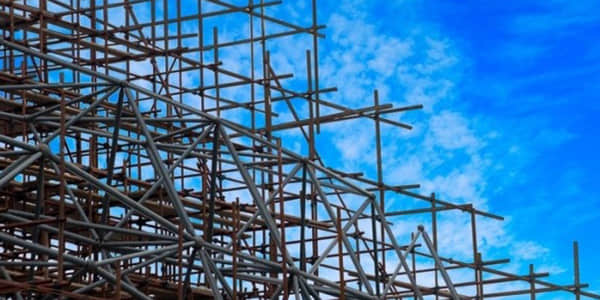A Deep Dive into Scaffold Standards and Ledgers
Jun 27, 2025Scaffolding standards and scaffolding ledgers are critical components of any safe and compliant scaffolding system. Understanding the role, types, and industry practices for standards and ledgers is simply vital for every person associated with a construction site, from the Site Manager all the way down to people individually working on a task.

Standards, also called uprights or verticals, are the vertical (load-bearing) members of a scaffold system. Standards run vertically from the base of the scaffold down to the supporting ground or structure to carry downward loads from the scaffold platform (working area) and any material or workers on the scaffold.
Think of standards as the primary vertical support members that establish the height of the scaffold and its primary stability. If standards were not strongly and truly plumb vertically, the scaffold may either skate on the ground or collapse.
· Load-Bearing: They are primarily intended to bear vertical loads. A typical standard for steel scaffolding (e.g., 48.3mm in diameter, and 3.2mm wall thickness) takes significant compressive loads and is engineered for a substantial amount of crushing load, usually several tons per component, depending on the grade of steel and the system.
· Material: Most often made of aluminum or high-strength steel.
· Connection Points: They have connection points (such as cups, spigots, rosettes, and so forth) located at regular intervals, often at 50cm (approx. 1.6ft) or 100cm (approx. 3.3ft) increments. These connection points allow the installation of other components, including ledgers and transoms.
· Base Plates: Finally, they rest on base plates (and often sole boards of at least 250mm x 250mm and 38mm thick) at the bottom, which allows for a greater bearing area to evenly distribute load, and helps prevent the scaffold from sinking into the ground.

If standards are the vertical support, then ledgers are the horizontal counterparts, the important connecting beams. Ledgers are horizontal tubes or members that connect the standards to each other along the length of the scaffold. They are parallel with the building or other structure and are what creates the rectangular or square bays of the scaffold.
- Structural Soundness: They function as a cross member to hold the standards together to avoid the standards from bowing and to contribute to a significant part of the scaffold's lateral soundness.
- Support for Transoms: They hold transoms (the roadways that span the ledger and hold working platforms/boards that go above them) directly.
- Hold Support Guardrails: Many systems also provide support for guardrails, a safety device usually erected height of approximately 95 cm to 110 cm (37 to 43 in.) high above the working platform face to prevent falls from height.
- Hold Spacings: They hold a spacing in between standards so the bays are constructed consistently to the design. Ledger lengths can be incremented in lengths of 1.2 meters (about 4 ft), 3.0 meters (about 10 ft), or any length longer to make the bay dimensions.
Scaffolding work is considered to be high-risk, making it subject to rigorous international regulations for design, erection, alteration, and dismantling. Regulations are developed from experience and accident compilation and are enforceable laws and regulations related to worker and public safety.
Key international and national standards that impact scaffold standards and ledgers include:
OSHA's Subpart L – Scaffolds (29 CFR 1926.450-454) governs scaffolding in U.S. construction. Key mandates for scaffold standards and ledgers include:
The EU utilizes comprehensive EN (EuroNorm) standards for scaffolding, adopted by member states, covering design, performance, and testing. Relevant standards include:
AS/NZS 1576 (Scaffolding) covers scaffolding design, construction, and safe use. Similar to other standards, it dictates:
Adhering to these national and international standards isn't just about avoiding fines or legal repercussions. It's fundamentally about preventing accidents, injuries, and fatalities. A scaffold built with substandard materials, improperly spaced standards, or inadequately secured ledgers is a disaster waiting to happen. The statistics on scaffold-related incidents underscore the absolute necessity of rigorous adherence to these established safety parameters.
What's the main difference between a standard and a ledger?
Why are specific dimensions/materials important?
Scaffolding —— Wikipedia
Buildings and Construction —— GOV. UK